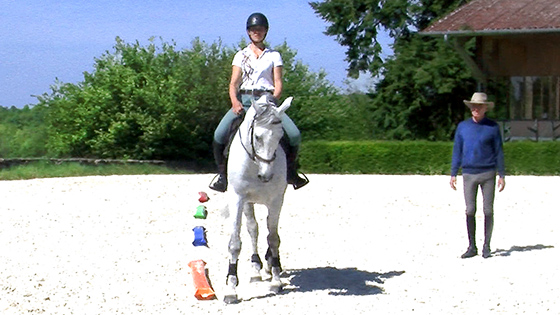Training for Leg yielding and Half pass

This exercise will help you tune up your aids and the connection with your horse. It‘s a good way to practice your suppleness while in motion and to learn to release any stiffness or tension in your body and your mind.
The priority of this exercise, is the fineness of the aids. The goal is to obtain results with a minimum of hand aid and a horse who comprehends the request correctly.
To get there, it implies that riders are able to stay centred in their position and to use their legs independently from one another. This exercise is about releasing the right side of the rider then the left side and so on…. It will be easy to realise that any stiffness, especially in the shoulders and arms, will jeopardize the success of the exercise. Therefore, being able to use the aids independently is as decisive as being able to use the legs without deteriorating the position.
The exercise is to be done at the 3 gaits knowing that it is critical to get the horse to understand the exercise and to create good reflexes at the slower gaits. This exercise can be practised at a canter which can also be challenging. It’s important to take the time to do it properly and not hesitate to divide this training over several sessions.
This exercise is linked to the sheet A6 of the Training program 1
To demonstrate the exercise, Michel is teaching Sélène who rides Surf de la Cense. You can notice that to stay on the track with the correct speed, depends on the capability of the rider to stay supple in her body and perfectly centred in her position with some light aids. A slight change in the position such as a too strong of a hand action or the eyes looking down, will disturb the horse. Therefore it will become very difficult to stay on the track with a steady rhythm which are the key elements to be successful in this exercise.

